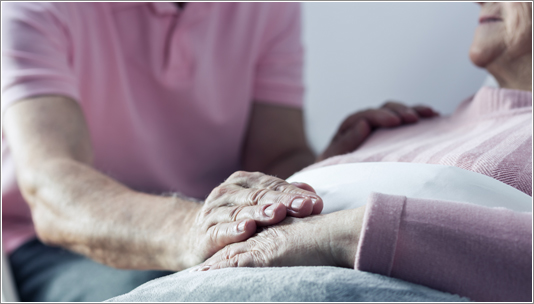

Choosing Where to Die
February 20, 2018 | by the National Care Planning Council
Birth and death are consequences of life. They happen to every one of us. Where birth is often a joyous occasion, death is often a sad occasion. But it not need be. It is hard to let go of someone we are close to but death also releases the loved one from pain, anxiety and unhappiness. For a caregiver, death is a welcome relief from years of sacrifice, stress and financial burden. And for those who believe in a life after death, a loved one has been released from a life of burden to a life of happiness.
Regardless of religious belief, the death of a loved one can often be a spiritual experience. But dying in the wrong setting can often lead to the departure of a loved one being an upsetting experience for the family. When a person expires, at peace in his or her own home, in a familiar setting and surrounded by loving family, that death can be an experience that the family cherishes forever. When a person dies in a hospital or nursing home amid the confusion of busy workers, tied to tubes and noisy machines and agitated by the lack of a familiar setting, that death may be remembered as an unsavory experience.
A recent survey by the End-of-Life Care Partnership, a Utah nonprofit end-of-life support group, sheds some additional light on the preference of Utahns where they would have chosen to die. A random phone survey of 150 survivors of recently deceased people was conducted. The deceased ranged in age from 23 to 100 but the mean age was 74 and over 75% of those who died were 65 or older. Over 80% of the respondents were spouses or children with the remainder having some other relationship to the deceased. The chart below indicates where the decedent's actually died. About 54% of the subjects died where they wanted. This means the other half of the group were
Place of Death |
Home |
Nursing Home |
Hospital |
Other |
Percentage |
37% |
33% |
28% |
2% |
denied their preference of their place of death. Those who were 65 or younger more often died at home (55%) and 97% in this group preferred their home as a place of death. Of those over 80, 38% actually died in a nursing home whereas 76% of those over 80 wanted to die at home. Comparing their last desires to where the study group actually died indicates we are doing a very poor job in meeting the end-of-life wishes for terminally ill patients. The study also compared these results to national statistics reporting where death occurs and found that people from Utah died more frequently at home than people nationally. Also studies done nationally indicate that those who are currently living, predominantly would prefer to die in their homes.
The person who is dying can choose the setting if he or she wants. There is no reason to die in an institution unless there is little time to transport the person to a more familiar environment or unless a person specifically wants to die in a facility. A person who is cognizant always has complete control over the medical care he or she receives. If the person who is terminal cannot make such a decision, then the family can.
There is no reason for anyone to accept death in an environment not of his or her choosing. Too often people accept the situation and don't act aggressively in making their needs known. Too often for a loved one at home, who is dying, and who is in crisis from pain or other acute attack, calling 911 becomes the first option. The loved one in crisis is transported to a hospital where death may occur. With proper planning a crisis need not result in transportation to a hospital emergency room.
Palliative end-of-life care is now a commonly available alternative for people at home who are in the last stages of their life. This could be hospice or some other form of palliative care. A crisis under palliative care would result in a call to the attending nurse or doctor and based on prior arrangements or advice, the crisis would be handled without calling an ambulance. We recommend that all terminally ill patients and their family make planning for death, using palliative care, a routine part of the preparation for the end of life.
